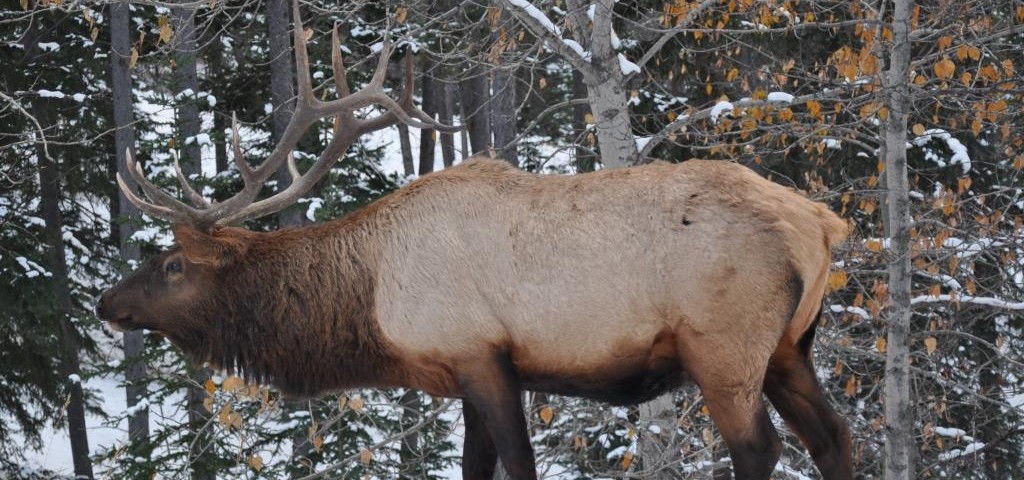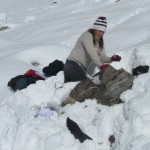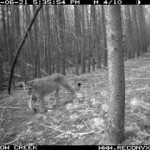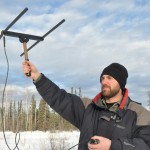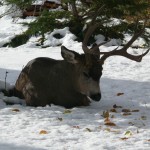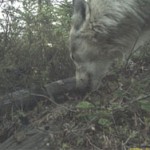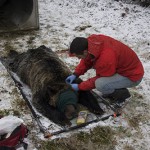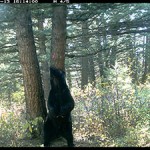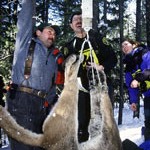The Boyce Lab at the University of Alberta is a research group dedicated to issues of terrestrial ecology and conservation mainly in Alberta, Canada. Led by Dr. Mark S. Boyce, researchers in the Boyce Lab aim to develop theories of habitat ecology that will establish mechanistic links between habitats and population dynamics. By primarily using a landscape approach, the laboratory philosophy is that spatially explicit models describing habitat quality are not only necessary for assessments of population trends or viability, but are further important in recommending on-the-ground practices for the management of our natural resources. Using priority conservation topics, the Boyce Lab provides a unique bridge between government, sportsmen, and public stakeholder interests through research.
RESEARCH INTERESTS
1. Habitat Selection and Abundance.
We have been studying distribution and abundance of large mammals for several years, building on technological developments with GPS radiotelemetry and camera trapping. Recently Jenny Foca used extensive camera trap data from Elk Island National Park and adjacent Blackfoot Provincial Recreation Area to estimate abundance of 5 species of ungulates. Grace Enns wrote her thesis on stone sheep in the Cassiar Mountains of NW British Columbia, documenting seasonal movements and habitat selection. Camille Warbington used mark-resight methods for spatially explicit capture-recapture abundance estimation related to habitat selection by sitatunga, a spiral-horned antelope in papyrus marshes of Uganda. Ian Gazeley is studying movement and habitat selection by bighorn rams in context of contact with domestic sheep where there is a risk of disease transmission. Wyatt Villetard will monitor habitat selection and migration by Sandhill Cranes.
2. Cougar Population Ecology and Prey Selection.
We had 2 M.Sc. students, Samantha Widmeyer and Meghan Beale, studying cougar behaviour and ecology with special focus on their predation on bighorns. Field studies were focused on the Cadomin area south of Hinton, Alberta. Samantha developed methods for evaluating the efficacy of extended cougar hunting seasons in mountain units of western Alberta, and has used stable isotopes to characterize cougar diets. Meghan’s habitat and prey selection studies call to question predator control programs for cougars in Alberta.
3. Harvesting Effects on Wildlife.
I am conducting a synthesis of the effects of hunting and other types of wildlife harvest on genetics, life history, and demography. This investigation involves research on density dependence, compensatory and additive mortality, uncertainty, and social disruptions, e.g., sexually selected infanticide. I am particularly interested in the Hydra Effect that emerges from an interaction between density dependence and harvesting. A variety of effects of hunting have been documented, but the extent and significance of these for management have not been synthesized. In addition, we have built models that can be used by Alberta Environment & Parks staff to evaluate alternative harvest policies, in particular those for elk being developed by M.Sc. student Tyler Trump. Mariana Nagy Baldy dos Reis is studying models for optimizing harvests of white-tailed deer in North Dakota, and Simone Ciuti continues to study recruitment of mule deer in North Dakota.
4. Carbon sequestration and conservation.
Ecosystems provide many services, including carbon sequestration. We are particularly keen on the role that native grasslands can play in sequestering carbon into the soil, potentially offering an avenue for grassland conservation funded by carbon credits. Timm Döbert was a postdoc who continues to work with colleagues JC Cahill, Scott Chang, Cameron Carlyle, and Edward Bork on an evaluation of adaptive multi-paddock and other grazing practices in Canada’s Great Plains and Aspen Parkland. Support from the Society for Conservation Biology has sponsored a related project on avian diversity on Canada’s grasslands.
5. Sea wolves in the coastal archipelago of British Columbia.
Michelle Hoang is working with Dr. Ramona Maraj to collaborate with researchers in Alaska on a new study of wolves in coastal environments. Concerns about human-wolf conflicts with First Nations motivated the research and we are intrigued by the ecology of these amazing animals in places that I would not have associated with wolves.
